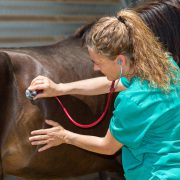2021 ISFM Consensus Guidelines on the Collection and Administration of Blood and Blood Products in Cats
S. Taylor, E. Spada, M.B. Callan, R. Korman, E. Leister, P. Steagall, R. Lobetti, M. Seth and S. Tasker | Journal of Feline Medicine and Surgery | April 2021
These consensus guidelines aimed to provide information for practitioners on blood transfusion in cats…











Connect with us